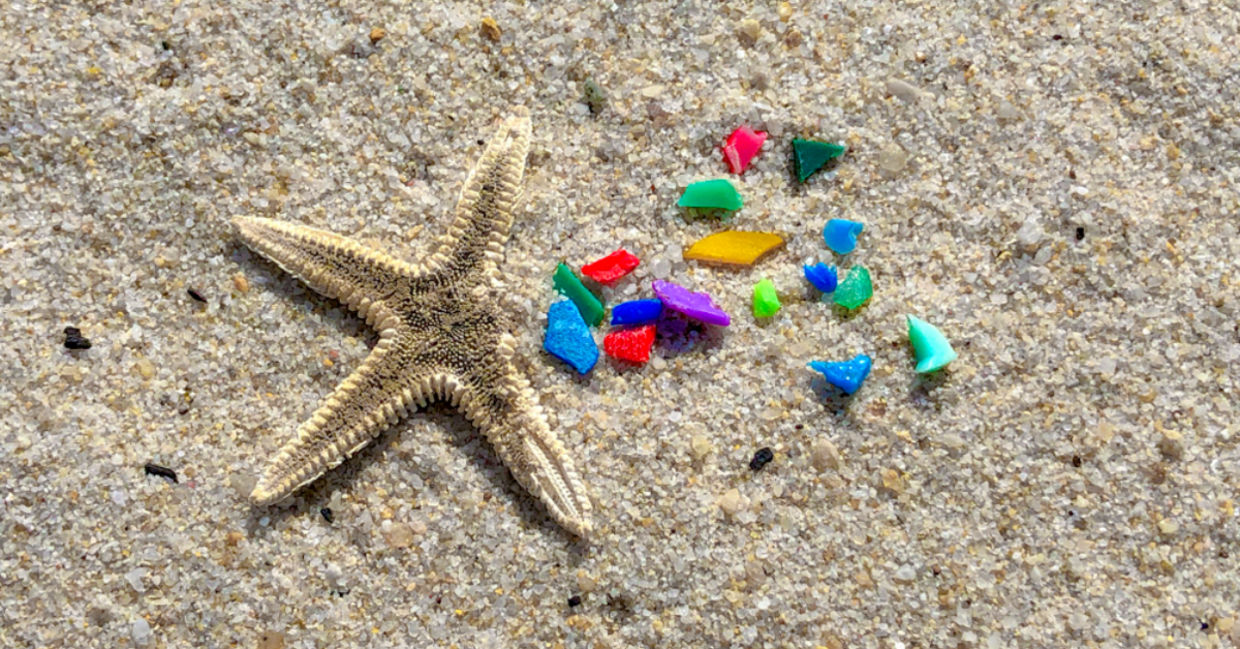
(Loretta Sze / Shutterstock.com)
The challenge of tiny plastic particles in our environment, one that’s intensifying as global plastic waste increases, continues to preoccupy scientists, citizens and journalists. These small pollutants are everywhere; in the air we breathe, in the world’s oceans, the food chain, our water supply, and even our blood, according to a study mentioned on Yahoo!finance, causing a potentially enhanced toxicity to organisms and human beings. Now a new study offers hope. Researchers in China have found a possible solution to help rid the world of these particles: ultralight synthetic sponges.
View this post on Instagram
An ingenious way of tackling microplastic particles
Microplastic pollutants are formed from commercial product development, and the millions of tons of discarded plastic which don’t dissolve easily, but gradually degrade into smaller particles less than 5mm (0.2 inches) in diameter due to weathering, sunlight, seawater erosion and scouring, as reported by National Geographic.
In this new research, reports Hakai Magazine, the scientific team outlines its development of a synthetic, biodegradable, marshmallow-like sponge, mostly made up of starch and gelatin, that can tackle microscopic plastic debris with significant success. In tests the scientists conducted, they report that when a prepared, plastic-filled solution is pushed through one of these sponges, it can remove both microplastics and nanoplastics, which are smaller still, from the liquid, as these particles become trapped in the sponge’s many pores.
The researchers tested the sponges in various real water samples including tap water, seawater, and even takeout soup! They found that their best results in optimal conditions relating to the concentration of plastic and the pH and salinity levels of the liquid, showed that these plastic-gobbling sponges removed up to 90 percent of the microplastics.
These absorbent microplastic solutions offer several benefits highlighted by the researchers. One quality is that they are lightweight enough to sit on top of a flower without dragging down its petals. This should make them easy and cheap to transport.
Also, as Guoqing Wang, a materials chemist at the Ocean University of China, and the paper’s coauthor, explains to Hakai Magazine, the sponge formula can be adjusted through temperature tweaks to be more, or less porous, to suit variously-sized microplastics.
In terms of practical applications, Wang believes that if mass produced, the team’s sponges could be used to filter microplastics out of the water in wastewater plants, or to decontaminate water in food production hubs.
Further practical applications that show promise
Scientists seem to agree that the work to extract microplastics needs to happen before wastewater reaches the world’s oceans. Anett Georgi, a chemist at the Helmholtz Centre for Environmental Research in Germany, advocates targeting wastewater treatment plants not already utilizing existing technologies such as filters made with sand or activated carbon to remove plastic, for instance.
According to a different study examining the contribution of the washing of synthetic clothes to microplastic pollution, the washing of synthetic textiles is the main source of primary microplastics in the world’s oceans today.
Christian Adlhart, a chemist at the Zurich University of Applied Sciences in Switzerland, is another scientist who has experimented with making sponge filters to trap microplastics. He has been inspired by the filter-feeding activity of oysters, trapping particles in their gills as they pump seawater through them.
Adlhart has suggested that sponges that soak up microplastics like these could be used in household washing machines for collecting most of these polluting particles as they are shed by synthetic fabrics during the washing machine cycle, and before they enter waterways.
YOU MIGHT ALSO LIKE:
Harnessing the Power of Seas
Discover an Edible Food Packaging Breakthrough!
This Collaboration is Transforming Washing Machines







